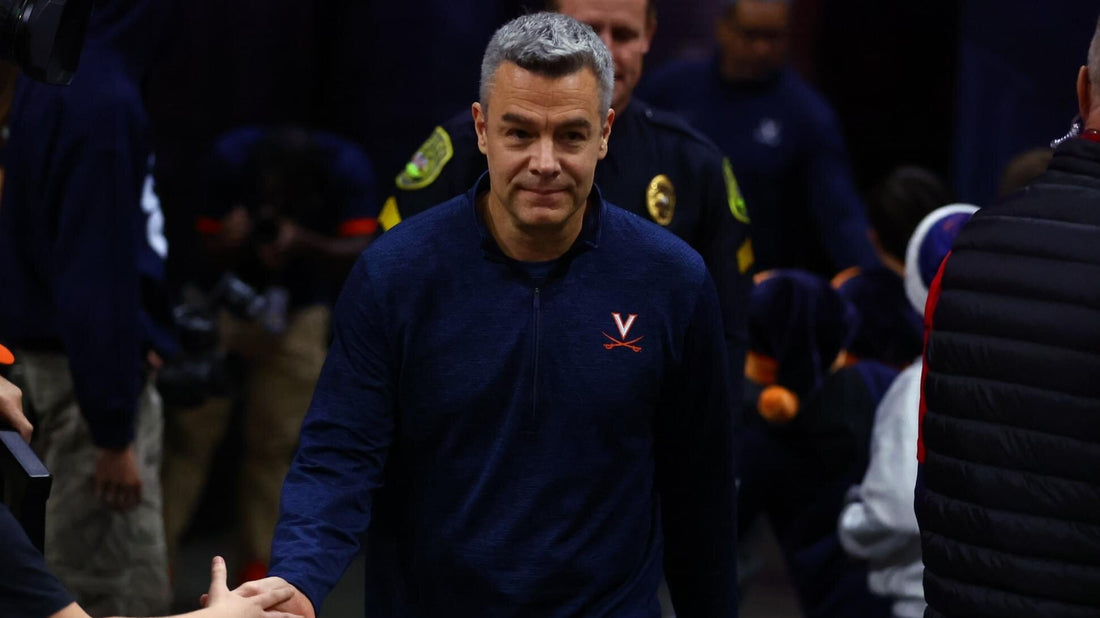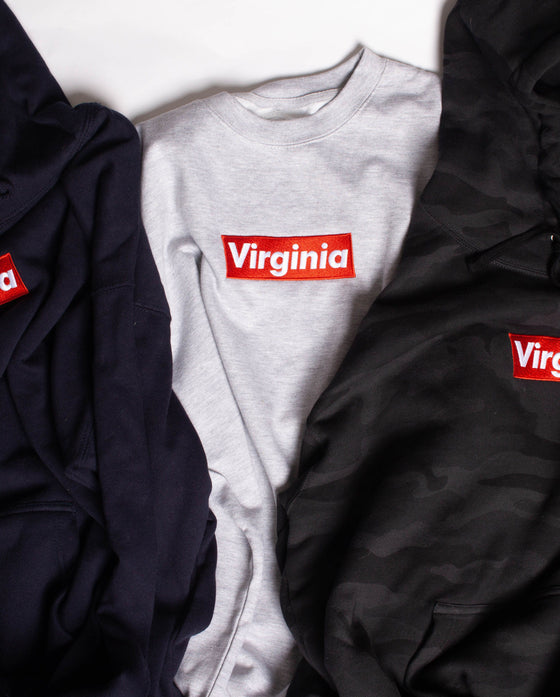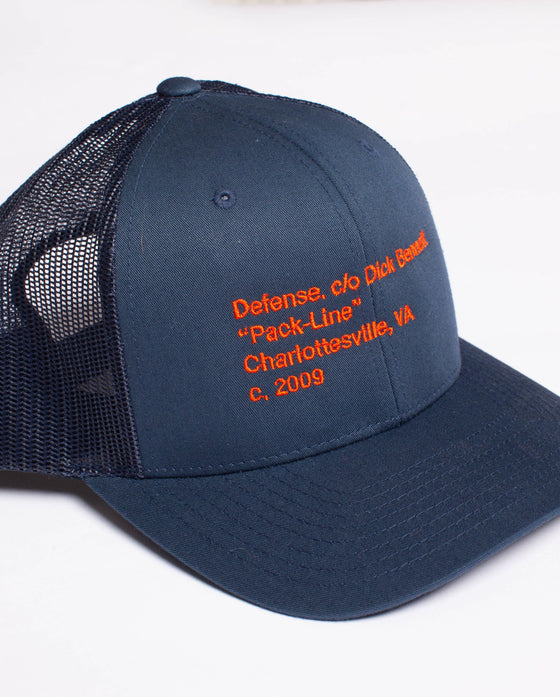Virginia Basketball Early Season Review

With the Virginia Men’s Basketball team on a short break over Christmas, I dig into what we’ve seen so far from this year’s Wahoos. Some of the good things that have happened and what it means going forward. How portal hits and misses have made an impact. Whether recent changes will hold up. And a few positive trends of late.
Positive Vibes
Successful Non-Con
Assuming they can avoid an upset in next Wednesday’s contest against Morgan State, the non-conference portion of the schedule will have been a success for Virginia. The Wahoos sit at 9-2 with a pair of quality wins over Florida and Texas A&M. Most importantly, no bad losses. They’ve put themselves on track for an NCAA Tournament bid.
At the same time, the Hoos were soundly beaten in their two most difficult games. 20+ point losses away from home against Wisconsin and Memphis. They’ve accomplished what was needed for their resume, while also showing they have a long way to go in order to win the kind of games necessary to compete for an ACC title or make a postseason run.
Thankfully, there is a long way to go. And a young team like UVA littered with new pieces has more potential for growth over the course of the season than most other teams do.
Vintage Packline
Tony Bennett’s packline defense is operating at an elite level this season. The Hoos currently rank 2nd in the country in adjusted defensive efficiency. It’s a familiar position for the program, but they actually haven’t been there in a while. After finishing with a top 10 defense in eight of nine seasons from 2012 through 2020, the Hoos had fallen off a bit over the past three years.
Should that elite defensive play continue, it provides a high floor for this year’s team. Virginia has qualified for the NCAA Tournament every time they’ve had a top 10 defense. They finished the ACC season in 2nd place or better in six of those eight years, and never worse than 5th.
Offensively, the Hoos rank 145th. They’ve failed to top the one point per possession mark on five occasions already. That only happened seven times all of last season. It’s pretty simple. This year’s team has a high floor thanks to great defense. Their ceiling will be determined by how much they improve on the offensive end.
Matching Guy
What Isaac McKneely is doing from three-point range is pretty special. He’s hit 50% of his attempts so far. After matching Kyle Guy’s freshman mark with 51 treys last season, McKneely is on pace to surpass Guy as a sophomore. Klye made 83 (2.4 per game) in his second season, McKneely is at 2.7 per game. Should he maintain the pace, It would be the second most three-pointers made in a single season under Bennett. Guy tops the list with 120 in his final season on the way to the national title.
Virginia fans would understandably like McKneely to get more shots. I’m sure the coaches are trying to scheme ways to make that happen. But for perspective, Isaac is getting more three-point attempts than Joe Harris did during any season of his college career. The difference between Isaac and his two comparable predecessors is that Harris and Guy did more damage inside the arc. Both of them made more two-point field goals than threes as sophomores, while 69% of McKneely’s makes have come from deep.
That’s the next step in McKneely’s development. Whether it happens this season or in the years to come, continuing to diversify his offensive skillset is the key for Isaac to join the list of Wahoo greats.
Hit and Miss
Value Play
The signing of Jake Groves probably got the least attention of any of Virginia’s offseason additions. But so far, he’s proven to be the most valuable on the court. The graduate transfer is averaging an efficient 8.2 points, while shooting 42% from behind the arc. His value goes beyond his own stats though.
Virginia has outscored opponents by a combined 91 points while he’s on the floor. That’s the best +/- of anyone on the team, despite Groves only playing 20 minutes per game. His presence on the perimeter pulls an opposing frontcourt player away from the lane, which opens up driving opportunities and cuts to the basket. They’re simply a much better offensive team when Groves is in the game.
Minor Problem
Virginia brought in graduate transfer Jordan Minor with the idea that he would likely start at center this season. Hasn’t worked out that way. He’s only played a total of 62 minutes through 11 games, mostly in mop up duty. It hasn’t caused much of an issue to this point. Groves is too valuable not to play a significant role, and freshman big man Blake Buchanan has shown that he can contribute. There’s really only room for two of the three in the rotation.
However, there are games ahead in which UVA will need more physicality up front. Wisconsin big man Steven Crowl exposed the problem more than anyone so far, bullying his way to 15 points and 10 boards. With all respect to him, Clemson’s PJ Hall and UNC’s Armando Bacot are bigger bullies. Whether it’s just Buchanan taking on the challenge or perhaps Minor carving out a situational role, it’ll be interesting to see how Bennett approaches matchups like those.
Here to Stay?
Triangle
Following their struggles in the Fort Myers Tipoff, Virginia went away from their blocker-mover motion offense. It’s been replaced by a variation of the triangle set they’ve used in the past. And the change seemed to have been for the better, as the Hoos rolled past Texas A&M and then dropped 84 points on Syracuse. The returns over the last two games haven’t been so good though. Time will tell how much that had to do with rust from exam break.
Last season, UVA did almost the same thing. They switched to the triangle as their primary offensive set, even moving Ben Vander Plas into the starting lineup to better accommodate the scheme. For a while, it worked really well. But over time, opponents solved the puzzle of how to defend UVA’s personnel in the triangle. Later in the season, Bennett returned to blocker-mover.
With that in mind, it’s to be determined if the offense being run lately is the season-long answer or just a temporary fix.
Former Redshirt
Freshman guard Elijah Gertrude was set to redshirt this season. After the first six games, there was a change of plans. Perhaps in part due to the ankle injury sustained by backup point guard Dante Harris. Gertrude is averaging 5.6 points in 14 minutes over his first five games. He’s brought a spark at times, while also having some very freshman moments as you’d expect.
It’ll be interesting to see what type of role Gertrude settles into once Harris returns. I tend to believe there will still be a place for him in the rotation. But it might be more situational, in which his minutes widely vary from game to game. And he probably still has a few more games to continue establishing himself before Harris returns.
Trending
Rocky Rohde
If I had to choose one player to track as a gauge of Virginia’s season the rest of the way, it would be sophomore guard Andrew Rohde. After going scoreless in the last two games, his season average has fallen to 5.6 points per game on a woeful 33% from the field. As Bennett noted though, Rohde wasn’t 100%. An injury held him out of practice for a week leading up to the Northeastern game.
Rohde has been much more involved since the change in offensive scheme. He had his first two double digit scoring games in wins over Texas A&M and Syracuse. And since they’ve gone to the triangle set, he’s dished out 4.6 assists a game. There are definite signs of him emerging as a second playmaker alongside Reece Beekman. Despite the last two games, I actually think he could be on the rise. They absolutely do need more scoring from him though. UVA will not contend for an ACC title with Rohde averaging 5.6 points.
Bond Dilemma
Freshman Leon Bond is a bit of an unorthodox player for the modern game. He’s best utilized as a small-ball power forward. But because Virginia has Ryan Dunn at that position, it’s a challenge to find the minutes Leon deserves. Bond consistently finds ways to contribute, often providing a spark. His ability to defend a wide variety of players is extremely valuable. And he comes off the bench with an assertive mindset, averaging 7.1 points in only 16 minutes per game.
His minutes are ticking up of late. He logged a season-high 22 minutes in the loss at Memphis. Bennett has shown more willingness to play Bond and Dunn together. I think we’ll see that more often as the season goes along, particularly when there are opportunities to use a true small-ball lineup with those two as the frontline.
Not So Terrible Anymore
On the season, the Wahoos have been a horrible defensive rebounding team. Florida and Wisconsin crushed UVA on the glass, both grabbing around half of their own misses. Even lesser teams early in the season were allowed way too many second chances. Given that limiting opponents to one shot is such an emphasis of Tony Bennett’s, it was unnerving to witness.
However, they’ve largely cleaned up the act since getting back from Fort Myers. The last five opponents have all been held under their normal offensive rebounding percentage. In the next outing, Texas A&M recovered 39% of their misses. Which is a lot, but not for the best offensive rebounding team in the country. UVA is one of only three teams to hold them under 40%. After that, it’s all been in the normal range. Syracuse got 28%, Memphis only 20%. A reasonable goal is to hold opponents around 25%. That’ll usually rank in the top 50 over a full season.
Virginia will continue to use small lineups. And they’ll no doubt at times give up more second chances than we’d like. It’ll be an occasional issue. That’s the trade-off. But It’s not nearly as much of a problem anymore as the full season stats would lead people to believe.
(Featured Image Credit: Keith Lucas/UVA Athletics)


